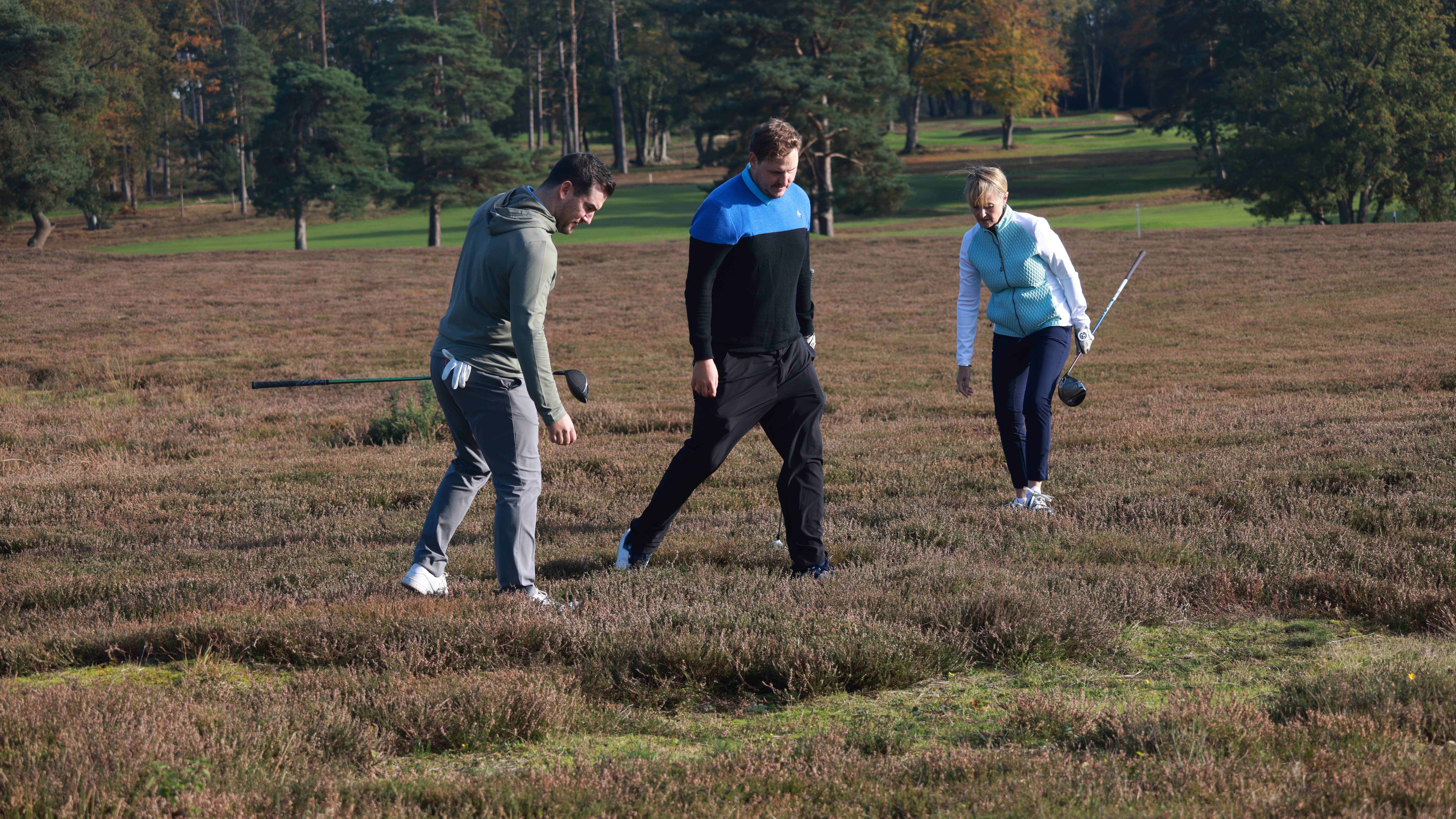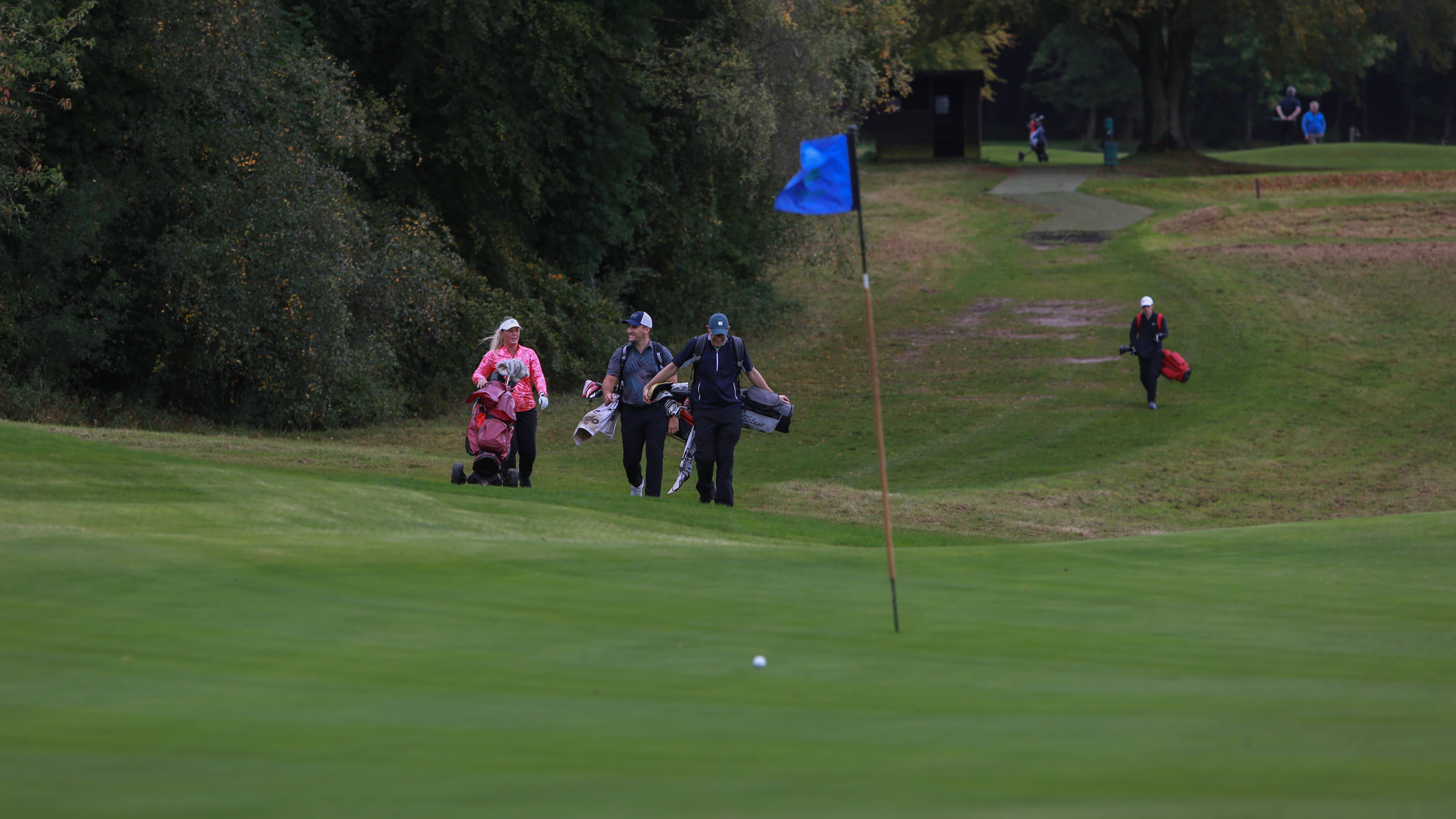
When coaching I instil the importance of maintaining focus on your own golf game and getting in your zone. But what if that zone makes you practically ignore your playing partners and becomes detrimental to your popularity at the golf club? I know many golfers who feel like they can’t be too focused as they don’t want to come across as being rude.
Is there a balance that can be struck? The subject arose recently when my pupil Matt asked me this very question. He’s been working hard with me this season on the mental side of his game - focusing on routine, acceptance, and trusting the process.
It paid off early at a recent event: an eagle on the short par-4 4th, a string of 10–12 foot putts, and he turned in one over. He was so locked in that he forgot to pull the pin out for his playing partners a couple of times. He couldn’t tell what they’d scored, he had to ask after every hole as he was fully in his own headspace.
The back nine started well, hitting fairways and keeping his rhythm, but things slowly unravelled. His partners began finding trouble, and he found himself helping them look for balls more and more. A fast, low-handicap group behind them started pressing, waiting on tees and approaches. His tempo collapsed, he was rushing, skipping parts of his routine, and hitting poor chips and long-range putts under pressure.

The result? A +12 back nine that felt far worse on the card than it looked on the course. Even his partners said it didn’t seem like he played that badly. But the truth is, his focus had shifted from his game to everyone else’s.
Matt’s tale isn’t unfamiliar. We’ve all been there. I know some golfers who refuse to play with beginners because they struggle to maintain focus on their own game.
Many would suggest that if you really want to play your best golf, then switching off from the rest of your group is the way forward, just look at tour players. However, I’d argue that one of the joys of golf is the incredible array of different people that we get to play with. By blocking them out, surely we are losing out on one of the main reasons so many of us play. If you use golf for business networking then this approach would make the entire outing pointless.
I believe you can play great golf and still interact and help playing partners. It’s a case of being in the moment and having a super strong routine you can count on that will easily get you back in the zone once you arrive at your ball. Here are some tips…
Keep It Friendly
Maintain friendliness when you are nowhere near your ball. A simple acknowledgement of good shots will go down well. Then be the absolute pinnacle of focus in that short time you have once you get to your ball. We all know that taking too long over a shot can have a detrimental effect on the result. So forge a very short sharp pre-shot routine that you can use for all shots.

Swift Pre-Shot Routine
Get to your ball and ensure that before you set your bag down you’ve had a good look around and taken into account things like the wind, ideal place you’d like to play your next shot from, and how your ball is lying. Once that golf bag comes to a halt you should have a picture in your head as to where you want the ball to go.
Introduce An Anchor
This can be something you physically touch or say before you enter into your pre-shot routine. This could be a tap of your head cover, or a click of your fingers, or simply a “Right Let’s Do This” said under your breath. Once that routine has started there’s no going back. Select the club and stick with it.
Think And Play
Stand behind your ball in what we’d call the Think Box. Consider where you intend the shot to go. Rehearse and finish the swing or the stroke. Now point your club at the horizon above your target and breathe deeply as you walk over that line into the Play Box. Address the ball and pick a mini target no more than a few inches in front of your ball. No need to look up again, simply commit to the shot and finish your swing.
Club back in bag signals the end of your shot. You might want to re-tap your head cover to close off your zone. Now you can apply attention to your playing partner. This routine will help you to stay in the moment over each shot.

Plan Of Action
If, like Matt, your playing partners are having a nightmare, then you could try having a few “parachute drills” which could be brought out in an emergency when you start to feel your focus float away.
This can be a simple hanging of the arms down and a rotation of the body to swing the tension away and clear your head. A stretch is a great way to reset yourself mid round. Perhaps encourage your partners to do the same. Sometimes helping others can lessen their woes and help to regain balance within the group. Be careful this doesn’t creep into the realms of unsolicited advice as you could wind them up and make it all worse.
Breathe Away Tension
I’ve always used breathing techniques to help to steady the ship both on and off the course. The slightest glimmer of panic and it’s easy for your game to spiral. Rectangular breathing is actually something I used for pain relief in pregnancy and have used ever since.
Find a rectangle on the course, your scorecard, a bench, or even the windscreen of a golf buggy. Quieten your eyes so they focus on a short side of the shape and breathe in as you follow the side up, then out as you follow the side with your eyes along the longer part. Then repeat. This will settle your heart rate, re-calibrate your mood and sense of control and boom you’re back in the room.
So you can be both great company on the course and play your best. Being aware and having strategies will help you find that balance. Remember, you can say no to players you don’t play well with. We play this game to hang out with great people and get to know others, but you don’t have to force it.







